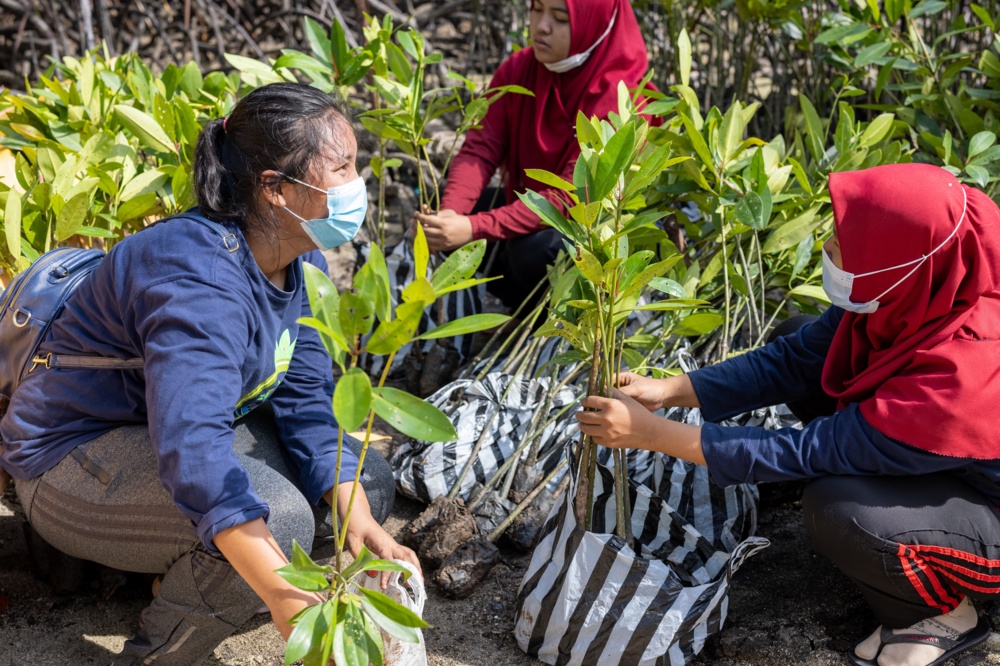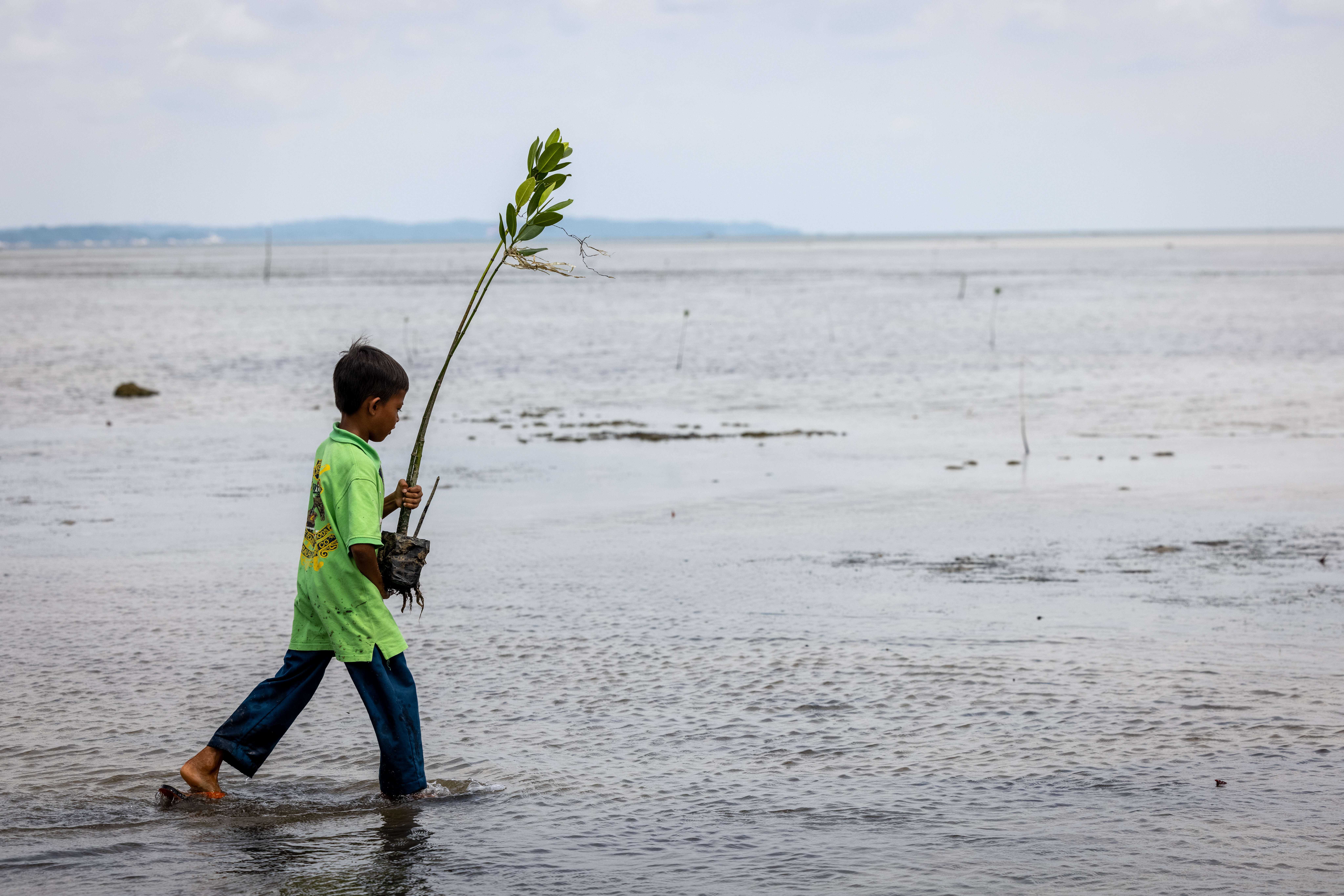
Rewilding the climate: Why ‘natural solutions’ are worth more than the sum of their carbon
At COP26 world leaders have been discussing the importance of nature and sustainable land use as part of global action on climate change, but they must realise that protecting nature provides returns well beyond simple carbon storage.
We are facing twin crises: climate breakdown and mass extinction. Both are already here. Around the world, extreme floods, fires, storms and droughts caused by the climate crisis are wreaking havoc. Under the biodiversity crisis, vertebrate species have declined by an average of 70% in the last half century. And these dual crises exacerbate each other: destroyed and degraded mangroves leave communities open to devastation from climate-driven storms, felled forests can no longer slow and disperse the flood waters as they race towards our homes, and overexploited fish populations leave food security in peril as crops are simultaneously at risk from drought.
We are systematically destroying the ecosystems that form our life support. Restoring and conserving wild spaces and reinventing and reinvigorating our relationship with the natural world will not solve every aspect of the climate crisis, but it will safeguard our future in a way that factories sucking CO2 out of the air do not.
Land
Forests are extraordinary ecosystems. Not only do they capture and store carbon and host a vast multitude of wildlife, they also provide water filtration, flooding and erosion prevention, medicines, air purification and soil retention, and health benefits.
By prioritising land that is low-quality farmland but perfect for woods and forests we can double tree cover with little or even no effect on food production. But even if we only consider carbon capture, biodiversity is key. To be effective, we must restore forests to their natural, diverse state, rather than lining up further barren industrial monoculture plantations. Over the same area, natural forests store an average 40 times the carbon of plantations. Preservation of old-growth forest and replanting native woodland species should be on the agenda for every nation.
Peatlands, while covering only 3% of the Earth’s landmass, store more carbon than all other terrestrial vegetation types combined. Peatland landscapes range from blanket bog landscapes in Scotland to swamp forests in Southeast Asia, and alongside carbon capture they purify our water supply and prevent flooding.
Around 15% of the world’s peatlands have already been drained for agricultural expansion and the mining of peat for horticultural use. Not only does this degradation limit carbon capture, it releases methane – a greenhouse gas with a heating effect roughly 30 times that of CO2, further accelerating climate breakdown. Damaged peatlands annually release almost 6% of global anthropogenic CO2 emissions.
Finally, healthy wetlands and rivers – some of the most carbon-dense ecosystems on the planet – also protect us against the climate impacts that are already ‘locked in’ – shielding communities from flooding, storm surges and rising sea levels, for example, and nurturing fish populations which can buffer against climate-driven food shortages.
Sea
Mangroves, and their rich, salty soils, are carbon-capture powerhouses - storing up to four times more carbon per hectare than tropical rainforests. Their brackish waters also provide nurseries for wide array of fish species, and a permanent home for endangered wildlife too, like the fishing cat. For coastal communities they can be a vital line of defence against extreme weather, reducing the damaging power of waves by 90%. But, just like our rainforests, mangroves are being deforested at a rate of 1-2% per year.
In a seagrass meadow, a single acre can host as many as 40,000 fish and 50 million small invertebrates. On top of that, seagrasses globally may store up to 19.5 gigatonnes of carbon and can capture carbon from the atmosphere up to 35 times faster than tropical rainforests. They are also able to slow wave energy, protecting the coast, stabilising the seafloor and providing food and shelter for fish, birds, turtles and manatees. Yet at the current rate of degradation, seagrass loss is emitting more than 300 million tonnes of carbon every year.
Protecting the coasts and ocean will create healthy ecosystems teeming with plant and animal life, which, among many other vital benefits, will stabilise our climate.
Horizon
By degrading the planet’s ecosystems, we are not only deepening the climate crisis, but destroying our own life support systems.
We must stop our short-term drive for ever-increasing consumption, decarbonise completely, and prioritise the restoration of our natural world and the protection of the communities who live in and depend on these irreplaceable environments. Perhaps a carbon factory could one day provide the same reliable climate mitigation as a forest. But it will never provide shade, shelter, new medicines and protection from floods. It will not host birds, butterflies, lynx, boar, fungi, squirrels, or peanut-head bugs. It won’t boost our mental health as we fill our lungs with clean air. It is not the world we want for our children.
This story was originally published by Ecohustler and is reposted here with permission
SIGN UP FOR OUR EMAILS AND STAY UP TO DATE WITH EJF

